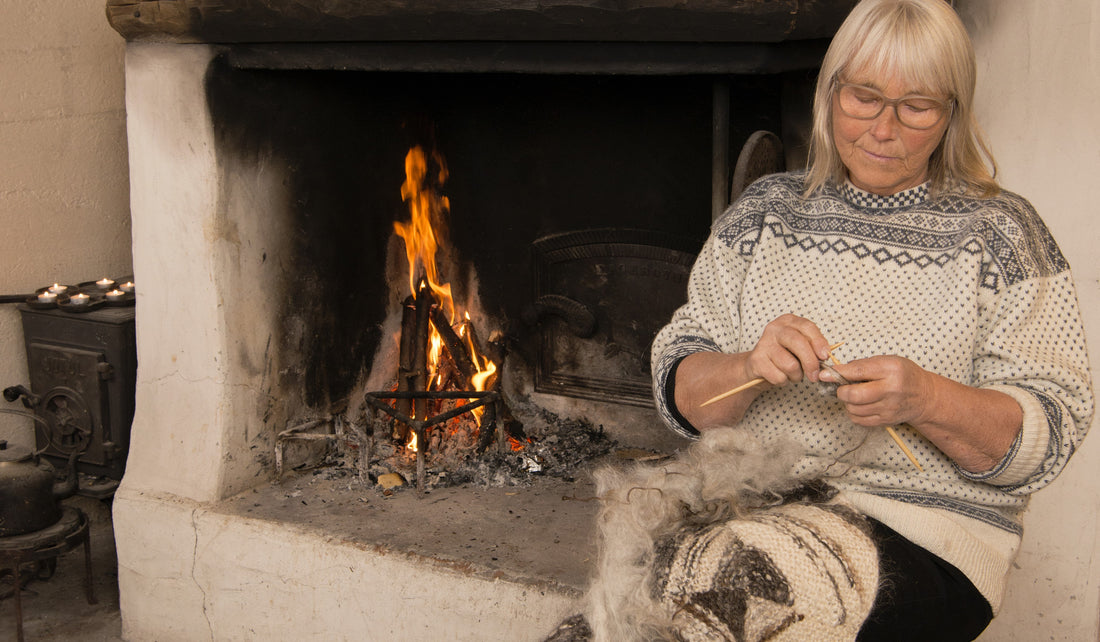
Meet the Sweater Detective

Image: Annemor Sundbø by Eva Kylland
Annemor Sundbø is taking part in our next Zoom talk - 25 November 2020, 6pm GMT – with Cecilie Telle and Arne & Carlos. Sundbø will tell us about her experiences as a woven textile designer and teacher. Her life’s work has been finding clues to the myths and meaning woven for centuries into Norwegian sweaters. The famous Setesdal sweater is probably the most recognised design within and beyond Norway. It is marked by a distinctive ‘lice’ pattern of white dots knit into a black background, and a neckline framed in colourful embroidery called løyesaumen and secured with a silver clasp. It is the Norwegian pattern most closely identified with a particular place and tradition, and Sundbø has become the country’s most respected expert of this design.

Image: Sundbo's interpretation of the sweater pictured in the postcard below.
Sundbø is on a mission to discover, document and preserve the craft of artisanal Norwegian knitting while it is still in living memory. She has interviewed the oldest women and men she can find in remote Norwegian enclaves to find out what they wore, how they were taught to knit, and how they learned patterns. She has identified symbols that date back to pre-Christian mythology, and which tell stories that even the knitters no longer understand. She is a magpie, ferreting out historical clues in fairy tales, Viking sagas and burial mounds, etymological traditions, old paintings, vintage postcards, and even in the remnants of knitted sweaters used to insulate 19th century houses. Sundbø has written seven books that document the cultural heritage of Norwegian knitting and textiles. One, Invisible Threads in Knitting (2005) won Norway’s Sørlandet Literature prize.

Image: A typical postcard by Trygve M.Davidsen from about 1935. The young man is out on a special errand perhaps he is a Jolebassen The Yule Guy who will bring luck to the house.
Today, Sundbø says, we consider crafts like knitting or weaving to be skills, embodying techniques that can be learned. We may even concede that art is involved, by which we mean that the work involves imagination, creativity, and inspiration. But Sundbø argues that even these definitions are missing something. In ancient times, she posits, textiles and the stories woven into them embodied a direct spiritual transmission from the maker to the recipient, a transmission that was both a literal and a figurative form of protection from danger and evil.
Annemor Sundbø will be speaking at the Selvedge Virtual Social Nordic Knitting on Wednesday 25 November. Buy your ticket at www.selvedge.org
This post is an excerpt from Issue 96 and originally, The Norwegian Sweater Detective by Sarah Pollock, which appeared in Craftsmanship Quarterly. The full article with additional photos can be found at craftsmanship.net.
